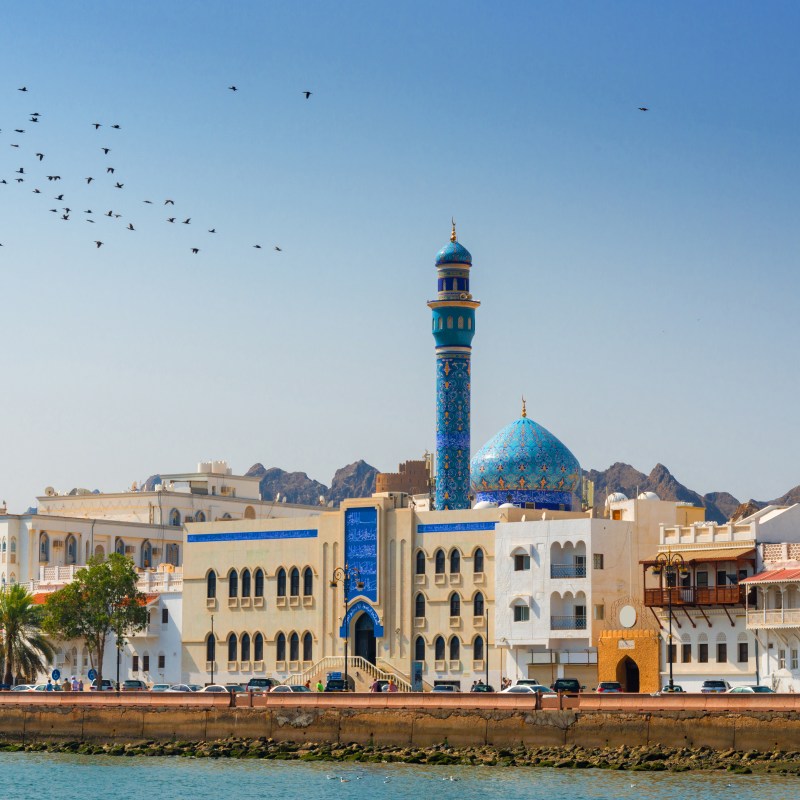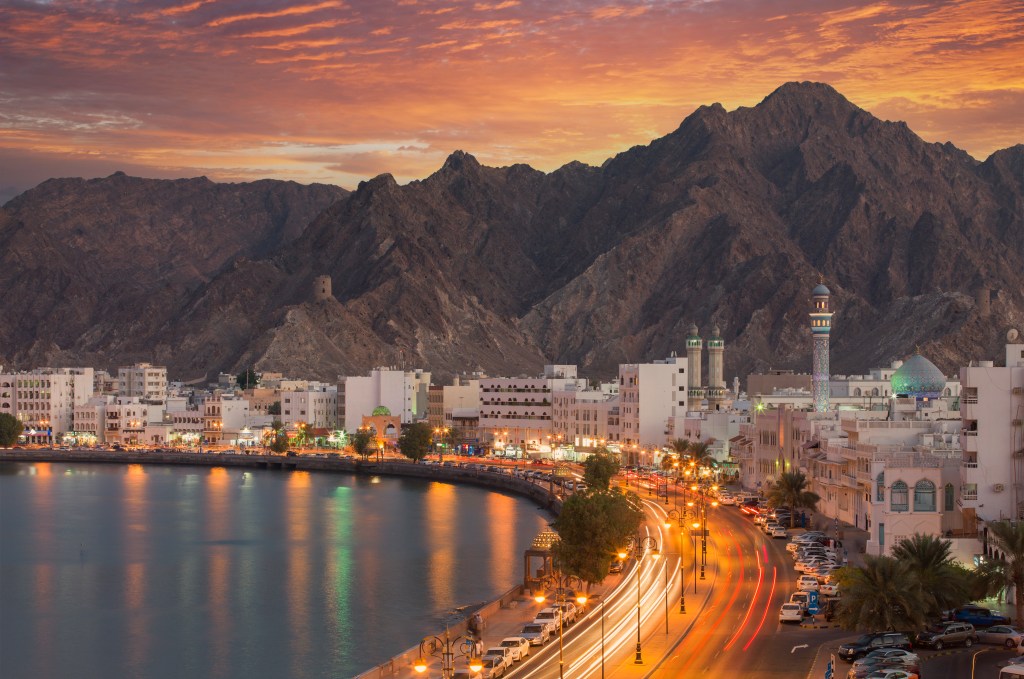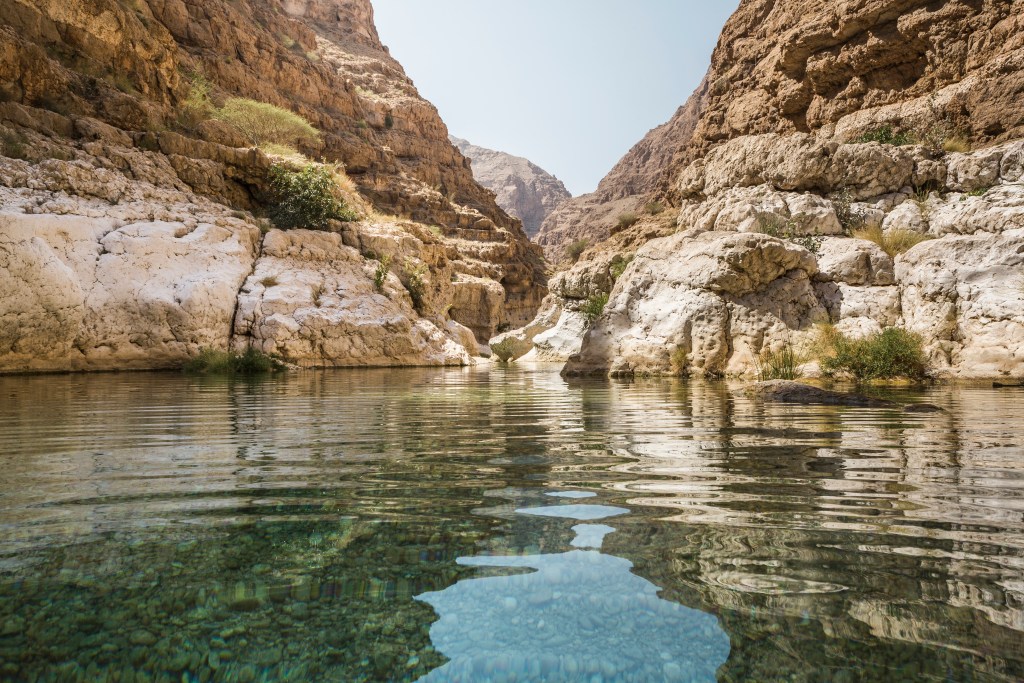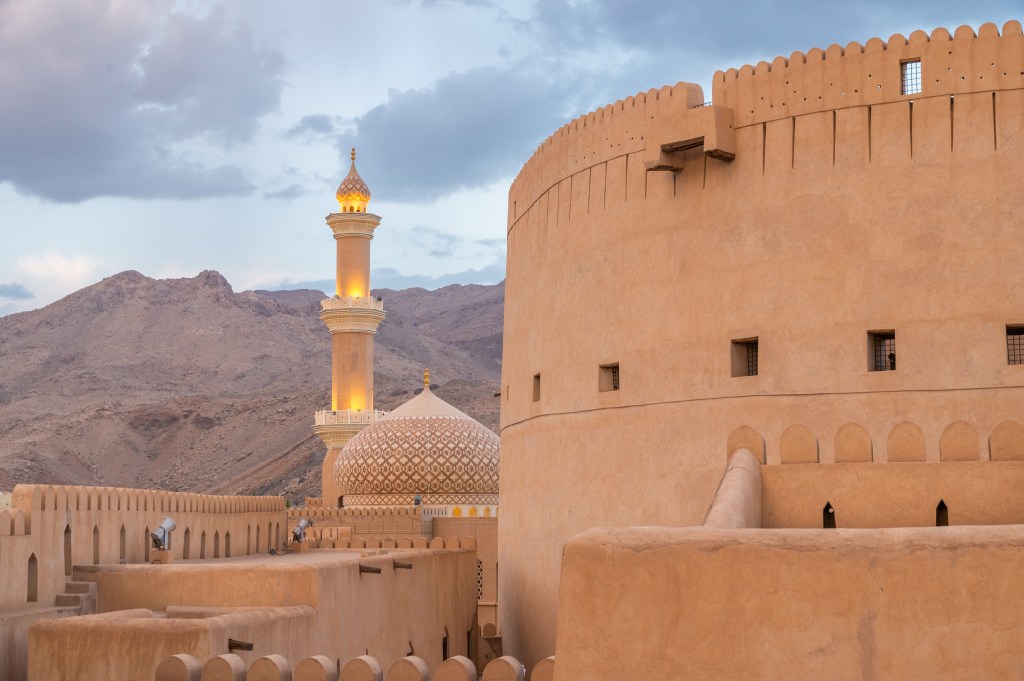
The tip of the Arabian Peninsula is home to two countries: Oman to the north and Yemen to the south.
Videos by TravelAwaits
Though Oman has flown under the radar for travelers around the world, it’s always been on my radar. I have Anthony Bourdain to thank for that. During Season 9, Episode 7 of CNN’s “Parts Unknown” television series, he visits Oman and reveals it to be one of the coolest, most distinct, and hospitable places on earth.
I rewatched the episode recently, inspired by a growing number of social media travel accounts that have covered Oman over the last year or so. It’s having a heyday, despite the fact that a huge swath of the Middle East is now a no-fly zone.
So, what’s behind the big allure to visit Oman?
Here’s the short of it: Oman has deep pockets thanks to its many crude oil resources, which its down-to-earth Sultan has used for the last two decades to create a little slice of Heaven on Earth—one with high literacy rates, reliable healthcare, and very low crime rates.
Plus, with thousands of years of history under its cultural purview, there are layers and layers of unique traditions to peel back. On top of that, natural desert and coastal wonders you can’t imagine.
Now, onto the better question—how would the average American traveler visit the country? Here’s what you need to know about visiting Oman.
Start in Muscat, then take off at your leisure

Oman’s capital city is Muscat. Americans only need a visa (which you can easily apply for online) if you’re staying over two weeks, so make sure you have that hammered out before flying over. I also recommend booking any flights from the US with Turkish Airlines.
The flight will stop in Istanbul, where you can take advantage of the Turkish Airlines Stopover Program—the only stopover program in the world that comes with a free four-star hotel stay. You can take advantage of the offer in both directions, as well, letting you explore Istanbul before heading to Muscat.
Once you arrive in Muscat, rent a car and the nation becomes your oyster. It’s around 120,000 square miles, which makes it around twice the size of the state of Georgia. Not the breeziest road trip, but also not the most difficult. Some of the destinations listed below are also accessible as day trips from Muscat.
Here’s what not to miss in Muscat:
Day trips from Muscat

You can reach the Hajar Mountains from Muscat (the tallest on the peninsula) and explore caves and wadis. Wadis are shallow bodies of water that form during peak rain, but Wadi Bani Khalid is fed by a water channel that never stops flowing. The result is a gorgeous green-tinted lake with striking mountain views.
This famous wadi is slightly smaller, but its waters are just as crystal-clear. Plus, there’s a bit of added greenery thanks to the narrow canyons that the wadi passes through. You can also enjoy hiking trails near this Wadi, which showcase the dramatic Hajar Mountains.
Though smaller than the wadis mentioned above, Bimmah Sinkhole is another great swimming spot—especially if you enjoy clear waters in desert settings. It’s almost like a cenote from the Riviera Maya, just repackaged in a desert form. Just know that this is a pretty small and basic spot that you can drive to from Muscat. It won’t take a whole afternoon to explore.
Snorkeling, crystal-clear water, and rocky coastlines—the Daymaniyat Islands are like if the Mediterranean had a love child with Zanzibar. During a day trip, you’ll spot wildlife like sea turtles and parrotfish as you snorkel through the warm, shallow waters. Maybe even a reef shark, if you’re lucky. And a jellyfish, if you’re unlucky.
Destinations to drive to after Muscat

Nizwa
You can drive a few hours south of Muscat to arrive at Nizwa. It’s a large city that once served as the nation’s capital. Don’t miss out on visiting the Nizwa Fort, which dates back to 1650, and the popular Jabreen Castle. You can also stick around to see the goat fair that happens every Friday. From Nizwa, you can also head further into the mountains.
Jebel Shams & Jebel Akhdar
If you enjoy a little hiking, head to Jebel Shams and/or Jebel Akhdar. They’re located in the high mountains surrounding Nizwa, letting you explore popular hikes like the Balcony Walk. Just know that they’re located at pretty high altitudes, with both at almost 9,900 feet above sea level. If you’re not a hiker, you might still be wooed by the mountain trips thanks to the Bahla Fort. It’s a UNESCO-listed fort that dates back to the 1300s.
Wahiba Sands (Sharqiya Sands)
This desert region in Northeast Muscat includes golden sand dunes that go on and on as far as the eye can reach. Some visitors drive, while others fly straight to Wahiba. You can book tour groups that organize your stay around Wahiba Sands, from more rugged camping options to a more traditional hotel or home-stay. You can spend one or two days in Wahiba Sands, depending on how much you love that introspective desert time.
